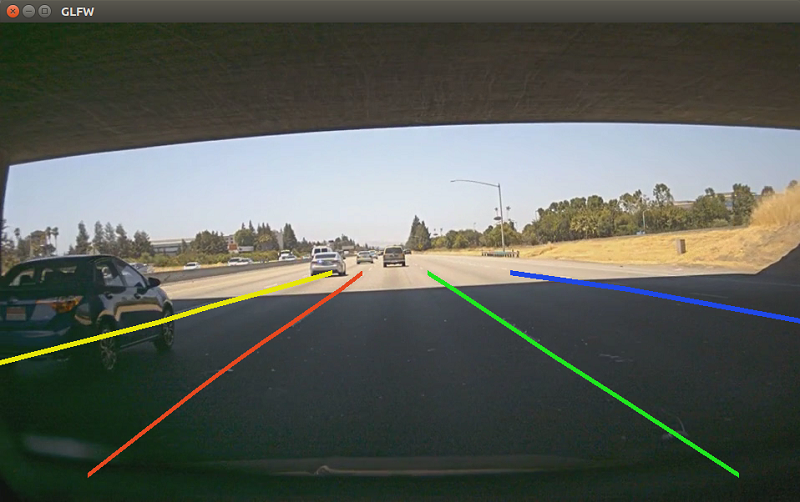|
|
DriveWorks SDK Reference| 0.6.67 Release |
|
|
DriveWorks SDK Reference| 0.6.67 Release |
This lane detection example demonstrates how to use the NVIDIA proprietary deep neural network (DNN) to perform lane marking detection on the road. It detects the lane you are in (ego-lane), as well as the left and right adjacent lanes when they are present. LaneNet has been trained with RCB images and aggressive data augmentation which allows the network to perform correctly when using RGB encoded H.264 videos.
This lane detection sample can stream a H.264 or RAW video and computes the likelihood map of lane markings on each frame. An user assigned threshold value binarizes a likelihood map into clusters of lane markings, then image post-processing steps are employed to fit polylines onto the lane clusters and assign them with lane positon types. The sample can also be operated with cameras.

The image datasets used to train Lanenet have been captured by a View Sekonix Camera Module (SS3323) with AR0231 RCCB sensor. The camera is mounted high up at the rear view mirror position. Demo videos are captured at 2.3 MP and down-sampled to 960 x 604.
To achieve the best lane detection performance, NVIDIA recommends to adopt a similar camera setup and align the video center vertically with the horizon before recording new videos.
The sample H264 video is located at:
sdk/external/data/samples/laneDetection/video_lane.h264
The latency of the sample LaneNet model:
The command lines for running the sample on Linux:
./sample_lane_detection --video=<video file.h264> --threshold=<floating-point number in (0,1)>
or
./sample_lane_detection --video=<video file.raw> --threshold=<floating-point number in (0,1)>
The command line for running the sample on DRIVE PX 2 with cameras:
./sample_lane_detection --input-type=camera --camera-type=<camera_type> --csi-port=<csi_port> --threshold=<floating-point number in (0,1)>
where <camera type> is one of the following: ar0231-rccb, ar0231-rccb-ssc, ar0231-rccb-bae, ar0231-rccb-ss3322, ar0231-rccb-ss3323, c-ov10640-b1, ov10640-svc210, ov10640-svc212
Note that lane detection sample directly resizes video frames to the network input resolution. Therefore, to get the best performance, it is suggested to use videos with similiar aspect ratio to the demo video. Or you can set Region of Interest (ROI) to perform inference on a sub-window of the full frame.
--thresholdParameter: A floating point number between 0 and 1.
Description: The threshold parameter is used to binarize a likelihood map. Any likelihood value above the threshold is considered a lane marking pixel. By default, the value is 0.3, which provides the best accuracy based on the NVIDIA test data set. Reduce the threshold value if lane polylines flicker or cover shorter distances.
LaneNet creates a window, displays a video, and overlays ploylines for detected lane markings. The colors of the ploylines represent the lane marking position types that it detects, as follows:
LaneNet detects the following lane markings and treats them as the same type.